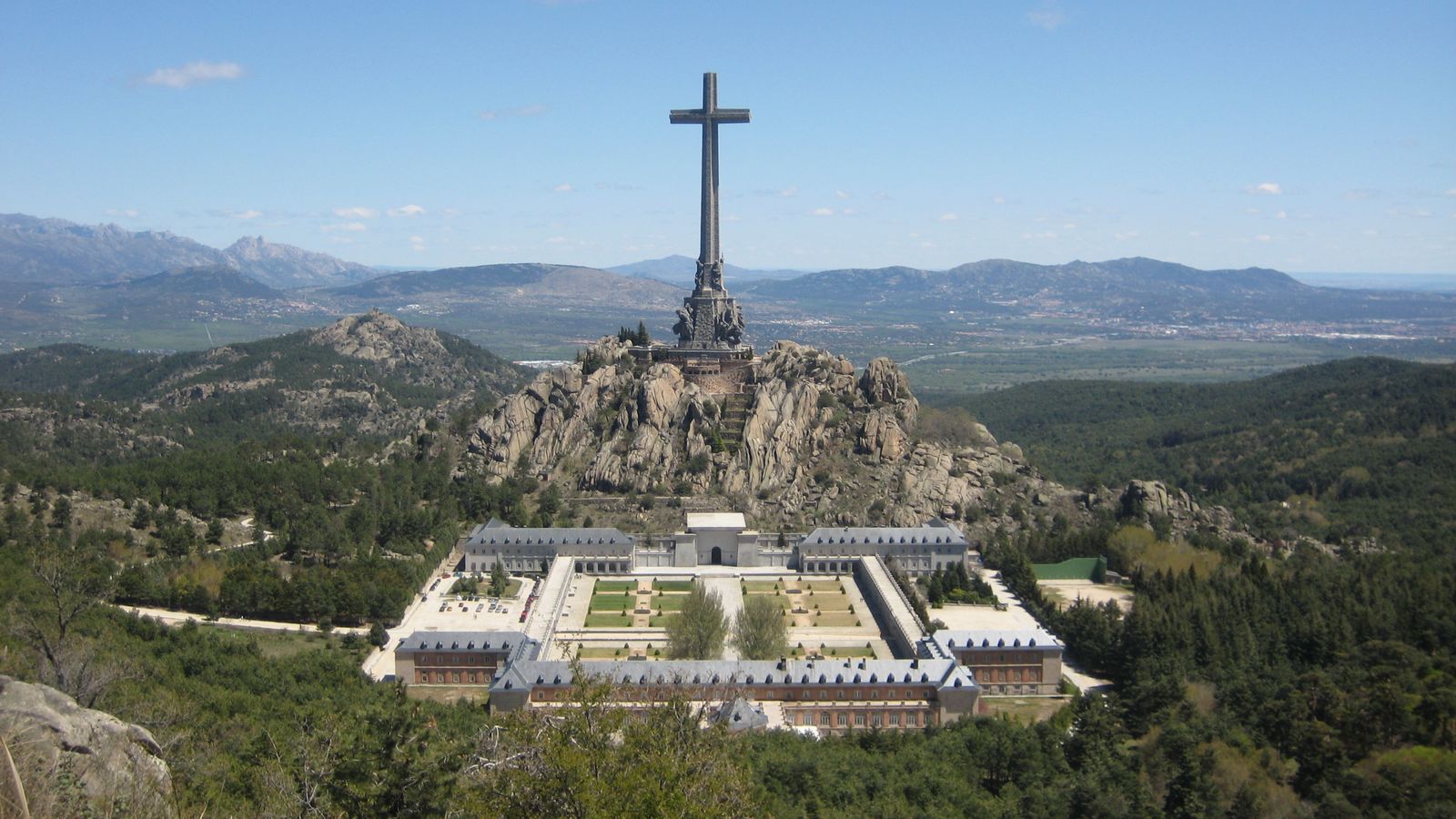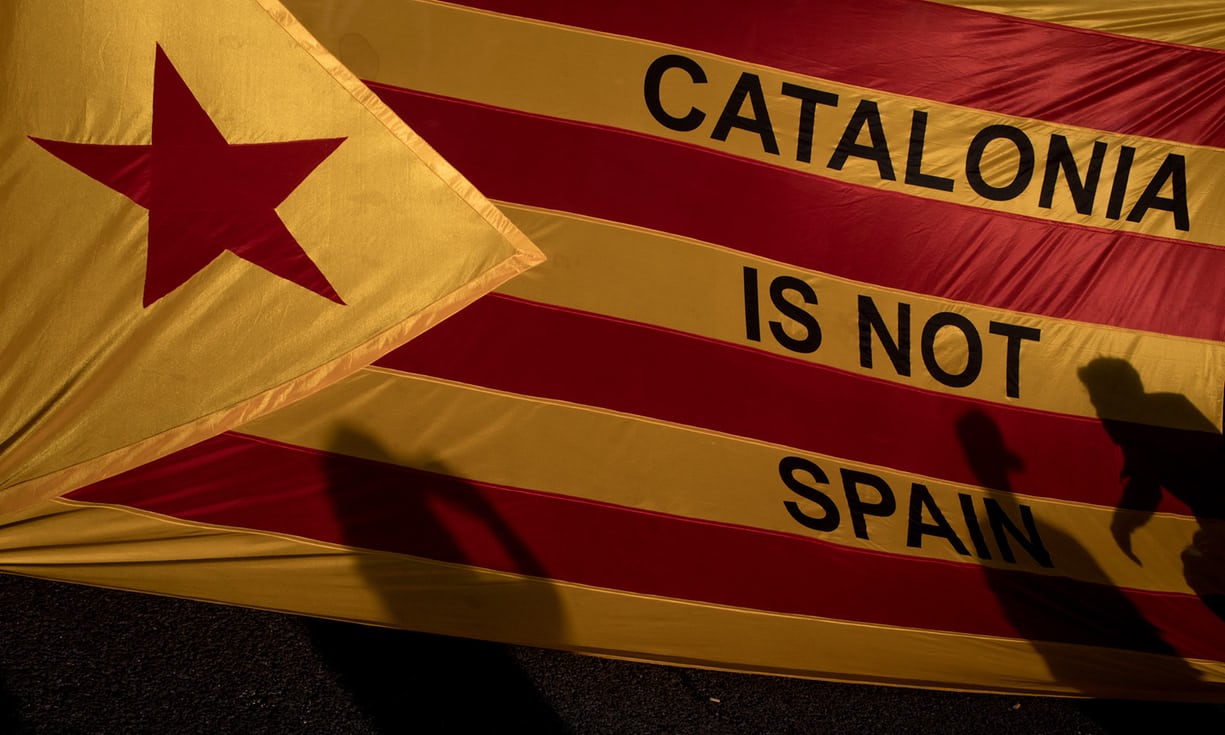After the victory of Catalonia’s pro-independence parties last year, when Catalonia declared itself independent through a referendum, the president of the central Spanish government Mariano Rajoy (Partido Popular) wrote on his Twitter account:
“Pido tranquilidad a todos los españoles. El Estado de Derecho restaurará la legalidad en Cataluña. MR” // “I appeal to all Spaniards to stay calm. The rule of law will restore legality in Catalonia. MR”
A history of division
Since the spread of Spanish nationalism from the 19th Century onwards, there have always been recurring tensions about the country’s unity. Not only is the territory of Spain that we can see on the official geographical maps a constructed entity, the Iberian peninsula also maintains a great linguistic diversity. Next to the official Castilian Spanish, the country hosts Catalán, Basque, Asturian and Galician. Politically speaking, Spain knew a growing nationalist-conservative tradition, as well as left-democratic one. Tensions were considerable among the two, and during a century of political and military upheaval, the Second Republic of Spain (1931-1939) did not seem to offer stability. The radical left sought to establish a revolution, while right-wing counter-revolutionary factions also joined stage, joined by the military. Popular opinion building up towards the Spanish Civil War (1936-1939), stated that there existed “two Spains” — las dos Españas (Viejo-Rose 2011) — that would be ungovernable within a democratic system.
Spain under Francoism
Under generalissimo Francisco Franco — who aided by the military and the Falangist Party took power after winning the Spanish Civil War from the Republican Loyalists that consisted out of various groups of anarchists, communists, workers unions and socialists — Spain would artificially be held together. The popular rhetoric of las dos Españas would be used by Franco to legitimate his regime, stating Spain could only be united under a strong authoritarian leader. In the name of this top-down unity of Spain, his regime authorized the censorship of any other language than Spanish, making Catalan, Basque, Asturian and Galician prohibited. Next to cultural repression, Franco’s regime was responsible for exiling political enemies of the state, but also of judicial executions and force-labor. Of course it was no coincidence that many of the victims of Francoism came from the political left found in the regional communities inside Spain. But there’s more.
Water under the bridge?
During Spain’s democratic transition after Franco’s death in 1975, an amnesty law was implemented in 1977 that granted amnesty to the officials of the Franco regime. People therefore called it ironically the ley de amnesia (Burbidge 2011). And indeed a pact of forgetting was also set in place in Spain, prohibiting public debates about the Fracoist past. The reason for this was that the democracy would still be perceived as an unstable form of government, and “opening up old wounds” could only endanger Spain’s precious kept peace and unity. Because of Franco’s artificial and violently imposed unity, and because of the silence on debates about the atrocities that took place under Francoism, something was bound to happen sooner or later. In 2007 the socialist government of José Louis Zapatero implemented the Ley de memoria histórica for the recovery of historical memory. It seeks to investigate the crimes committed under Francoism, to dig up the mass graves of the Civil War, but also to remove hurtful symbols related to Francoism. For the latter, one heritage site provokes the most opposition and consequently also resistance: el Valle de los Caídos. This monumental mausoleum dedicated to “all” the victims of the Guerra Civil, was built under Franco and el generalissimo was buried there himself on top of the Falangist martyr Primo de Rivera. Its fascist and militaristic symbolism provokes controversy, while several conservative groups and individuals still hold it is a place for reconciliation. This is a rhetoric that can hardly hold if you consider that many mass graves of the Republican fallen soldiers were involuntarily moved there in 1959. Being buried together with their former conqueror does not particularly help this memory conflict forward.

El Valle de los Caídos.
Regionalism versus national unity
Spain has remained a country that is strongly defined by its regionalism. This was again shown on October 1st 2017 when the Catalonian independence referendum was held. But also the Basque independence movement can be seen as exemplary for this. What remains staunchly imbedded in Spain’s public reactions to these events and the calls for regional autonomy, are the strong centralist reactions coming from Madrid. So much is exemplified by Rajoy’s tweet above. Lately, Rajoy decided to deepen the conflict between regionalism and national unity even further by terminating the educational model that makes Catalán the working language in Catalonia. The Catalonian fury sparked by this announcement has off course to been understood in a longer history of oppression and censorship in Catalonia and Spain that had existed under Franco. Rajoy knows that, and played this Francoist card well as sentiments on both sides are stirred up. I say both sides, because the Catalans also know to play the role of the victim all too well, triggering Catalonian nationalism immediately when opposed. In their run to independence they have engaged in a politics of memory, claiming to be the one’s who have suffered most under Francoism while in reality all of Spain suffered under the regime.
As George Orwell – who also wrote an account of his experiences of the Guerra Civil – puts it in his novel Nineteen Eighty-Four: ‘Who controls the past controls the future: who controls the present controls the past.’ Indeed, the Spanish case shows how the past can be used and misused as a resource for politics in the present. Dictatorships tumble or pass eventually, but their traces last.
Melle van Maanen
References
Aguilar, Paloma. (2008). ‘Transitional or Post-transitional Justice? Recent Developments in the Spanish Case’ in: South European Society and Politics 13:4, p. 419.
Burbidge, Peter. (2011). ‘Waking the Dead of the Spanish Civil War: Judge Baltasar Garzón and the Spanish Law of Historical Memory’ in: Journal of International Crime Justice 9:3 (July), p. 736.
Viejo-Rose, Dacia. (2011). Reconstructing Spain: cultural heritage and memory after civil war. Brighton: Sussex Academy Press, p. 30-31.
